Dina’s Diner July 1, 2019
NOT YOUR FATHER’S DRAG ANYMORE
The online magazine, Slate.com, had an article that reviewed the documentary HBO movie Wig and its message about the drag scene past and present. It appeared on the site June 24, 2019. The documentary is directed by Chris Moukarbel and features interviews with drag stars past (Lady Bunny, Linda Simpson, Flotilla DeBarge) and present (Charlene Incarnate). RuPaul Charles bridges the generations having thrived before and after the Wigstock festivals.
As the article mentions, the movie was being released in June to correspond with international Pride Week celebrations. The thesis of the film – according to the article – is that “real” drag died in the early 2000’s when the long-running “Wigstock” event closed down in 2001. Wigstock was a festival of drag and the creation of New York-based drag queen Lady Bunny who provides historical perspective for the movie. Way back in 1995, during Wigstock’s heyday, the festival was itself the subject of a film, Wigstock: the Movie. The new movie also mentions the reincarnation of Wigstock as a Brooklyn-centric event now.
Here is how Slate set up the new film’s premise: “Moukarbel seems dedicated to advancing the narrative that “real drag” died with the end of Wigstock in 2001. What is captured about the present is the tension between older and younger generations of the queer community. Lady Bunny’s commentary throughout the film, while charming, reveals a deep sense of resentment and suspicion about her drag successors, frustration she expresses through a handful of shady monologues. From the influence of RuPaul on drag (too careerist and professionalized) and the mainstreaming of homosexuality to the rising cost of living in NYC and the impact of technology on culture, Bunny’s anxieties reflect those one hears in many gay inter-generational conversations in 2019.”
Having come of age as a crossdresser in the early and mid-1990s, I have a little nostalgia for drag when it was a more underground activity than its current place in the culture as a televised reality series. There are more important issues at work in the evolution of drag – and perhaps the gay community at large, the Slate article posits. “All over the world, gay and lesbian bookshops, bars, bath houses, and dance clubs—places which have been crucial for community establishment and for the advancement of LGBTQ rights—have been closing at an accelerated pace. But these closings represent a fundamental shift in the way that many younger LGBTQ people relate to one another and to themselves. There is a suspicion that the mainstream acceptance of homosexuality will somehow make the queer spaces redundant and that, absent a uniting threat, the gay community will fall apart, leaving a sanitized, commercialized husk in its place.” Lady Bunny tells the filmmaker: “We could use a dose of community. When we had a common enemy like rampant unchecked discrimination, inability to marry or serve in the military, or AIDS, we did come together because there was an enemy to fight. Now I think we’re tending to fight each other more.”
That narrative reminds me of how punk rock was created out of the disillusionment with the “corporate rock” of super-groups and big record deals in the late 1970s. Maybe the RuPaul-ization of drag will spawn a generation of grittier drag queens who will bring back the outlaw spirit of the original downtown drag stars.
I had a Diner item a year ago about the disappearing gay bar scene and another item about how hard it is for drag queens to make a living unless they have the Drag Race stamp of success on their resume. Call it progress; call it forgetting history, every generation mistrusts the next as bereft of respect for what went before. Meanwhile in the real world, I still see notices for “Drag Bingo” and “Drag Brunch” events and that is about as ‘90s as you can get…girlfriend.
BEAUTIFUL QUINCEANERAS
I have seen the term Quinceanera (pronounced “keen-sey-ah-nyair-uh”) many times without ever knowing anything about the meaning of it. I saw an Associated Press article about the number of Bay Area quinceaneras using the Mormon Temple in Oakland, California as a backdrop for their photos. The article appeared on June 22, 2019.
Here is a Wikipedia excerpt on the quinceanera tradition: “The celebration is for Latin American girls who, on turning 15 are no longer considered children, and are honored and introduced into their community as young women. Contemporary festivities combine Spanish-Catholic traditions with those of Aztec and other indigenous heritages and add in a few modern twists.” The modern twist that caught my attention in the AP article was the fabulous quinceanera gowns worn by the girls.
The gowns are elaborate, princess-like creations that celebrate femininity without the overt sexuality that has creeped into other teen events like Proms. The versions I saw online usually had a strapless form-fitting bodice with a voluminous explosion of ruffles and tulle in the skirt and train. Almost all of the dresses looked like they might have been made out of cake icing or cotton candy, so dreamlike were they. The quinceaneras usually sport sparkly tiaras to complete the fairy tale imagery.
The idea of turning into a princess — whether of the fairy tale variety or something a little more down to earth – is a motivation for many crossdressers who have long since passed their quinceanera age. The flowing princess gown is not something you see a lot in crossdressing photos online. It’s not easy to get an adult male torso into a fitted bodice even if the floor length ballooning train would hide a multitude of sins. However, I know there are a handful of us out there who enjoy the fantasy of ruffled petticoats and fabulous ball gowns.
I came across an article about a trans girl who had a quinceanera party also. Zoey Luna had her quinceanera covered as part of an HBO special 15: a Quinceanera Story in 2017. I would think that if you were a Hispanic boy who had any feelings of gender identification with the fairer sex, the idea of getting into a cloud-like quinceanera gown and tiara would have a great appeal. Si, muy bonito.
OPERA, REAL LIFE AND TRANSFORMATION
The New York Times Sunday magazine had a series of articles about performers in the June 2, 2019 edition. One of the articles that caught my eye was about opera soprano Ying Fang. The Times introduces her thusly: “Fang is a 31-year-old soprano whose voice moves with enchanting precision way out near the edges of plausible human range. As a child in Zhejiang province on China’s East Coast, she exhibited a remarkable talent for memorizing the music she heard on the radio and TV — and then reproducing it, powerfully, out of her own mouth.”
But it was the opening set-up paragraph that lured me into the article. “How does a normal, everyday modern person — someone who might stand next to you in line for coffee, wearing sweatpants, checking Twitter, stifling a sneeze — turn into an opera singer? Opera is one of those popular spectacles, like professional wrestling or national politics that force human beings to act like aliens. Performers teeter across huge stages under large wigs, clutching in agony or triumph at one another’s costumes, sending thick ropes of sound from their mouths, often for hours at a time. Entering this world would seem to require some kind of radical metamorphosis.” A normal person transforming themselves with large wigs, costumes, and making people suspend disbelief in the metamorphosis. Hmmm, sounds familiar, n’est-ce pas?
In Ms. Fang’s case, the transformation also entails (in many of the operas) costuming her contemporary Asian-American self in 17th century European elaborate dress. As the photo shows, a platinum wigged, brocade gowned Asian woman is an attention-grabbing amalgam of gender cues.
The Times spoke to Ying Fang during performances of a Mozart opera La Clemenza di Tito. “On opening night, the audience lauded Fang’s performance with instant calls of ‘brava’; reviewers praised it as ‘lush and gorgeous,’ ‘silvery’ and ‘a source of pure joy and light.” It’s a life of discipline in a world that is subject to meticulous critical review. “We’re vocal athletes,” she says. “Basically, the vocal cords are just two little muscles, aren’t they?” The music is always running through her mind. The Times reports, “Some days, after a rehearsal, she’ll find herself walking down the sidewalk, deep in thought, and the music will burst spontaneously out of her. She wonders if passers-by think she’s crazy — this woman singing opera right there in the middle of ordinary life. “I hope they’re not scared,” she says.”
Sometimes you just can’t keep the transformation bottled up. You got to let it out.
I SAW IT IN A MAGAZINE
If you’re of a certain age, you probably remember the crossdressing magazines available in fine adult bookstores everywhere. Besides the pornographic “she-male” publications there were numerous magazines devoted to crossdressers’ photos and personal ads.
I came across a website that sells old adult magazines, videos, even 16mm movies. They have an extensive collection of magazines under the “Transgender” category and many of these are the old crossdresser contact publications. I was a regular purchaser of these mags when I was starting out in the late 1980s and early 1990s. A lot of the magazine covers I saw on the site I remembered owning and perhaps still have stashed away somewhere in the Diner basement.
As I get older, my appetite for crossdressing nostalgia grows. Looking at those magazine covers with some familiar faces (you kept seeing the same girls in multiple magazines), made me wonder whatever became of them. Given the age demographic of crossdressers in the magazines, I’m sure many have passed on to the great lingerie closet in the sky. I know many are still active in the online world.
The magazines are a reminder of a slower time when you had to travel to a dirty bookstore and send and wait for snail mail ad replies instead of instant browsing on your laptop or phone today. Where did we get all the time…and where did it all go?
BODY PARTS
Like many guys, I am fascinated by women’s breasts. As a crossdresser, I have been confounded at times by how to create the best bustline. Sometimes creating false cleavage, sometimes using various falsies, and sizing them up to account for my middle-aged weight gain. My favorite light weight boob substitute was a simple sponge Nerf ball halved and trimmed down to some appropriate size. It’s damn near impossible to find sponge Nerf balls anymore. Had I known, I would have stocked up years ago.
The professional breast forms on the market are quite remarkable now. Not just the boob forms but the entire “breastplate” products that allow you to have the breasts of Playboy centerfolds, Hollywood celebrities, or porn stars (your choice) with a seamless slope from neckline to however far down you wish to show. The photo here is from one of our advertisers, The Breast Form Store. I’ve seen some crossdressers online who must be wearing one of these items but it is almost undetectable in photos. Your eyes are sending one message when you see those remarkable hooters and your brain is trying to send you the logical answer. Logic usually loses.
I saw this photo of five women professional golfers at a tournament event. Notice the tan lines at their ankles. Apparently this is a common affliction for lady golfers who usually go bare-legged in shorts or skirts but need to wear anklets and golf shoes while playing. So the sun hits them at mid-thigh through just above the ankle. The pros embrace the strange tan lines and this photo from Paula Creamer’s (on far left) Instagram was hashtagged #yesweallhavetanlines and #notwearingsocks.
Summertime creates its own challenges for crossdressing. Humidity is unkind to full face makeup, daylight savings time makes sneaking out of the house more difficult, and we have our own tan line issues. Male tan lines usually stripe the biceps where t-shirt and polo shirt sleeves end. Our delicate spaghetti-strap summer dresses are draped over our creamy shoulders while three quarters of our arms are the color of cocoa. Oh, well, embrace the tan line dissonance ala the LPGA women with #wewearshirtsindaylight and #didntyoueverseeaguyinasummerdress.
Like to make a comment? Login here and use the comment area below.
Category: Transgender Fun & Entertainment


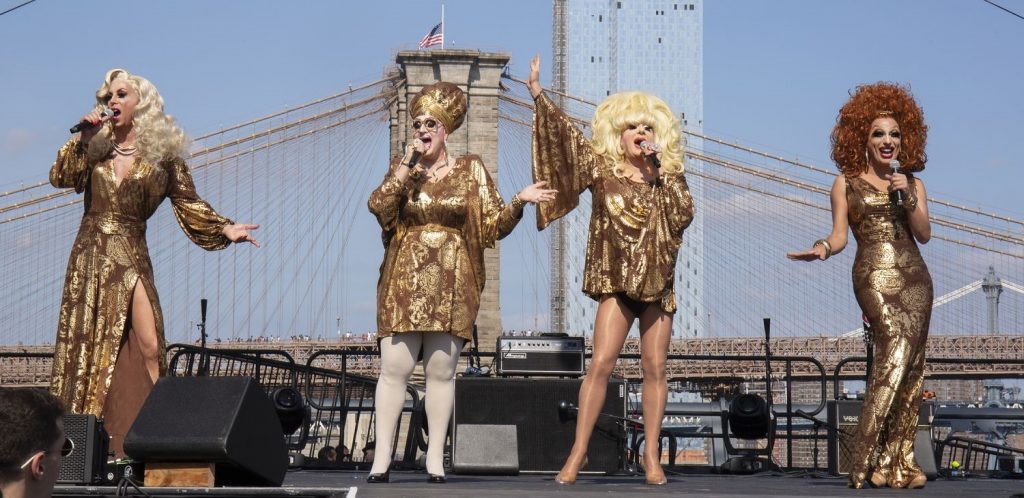

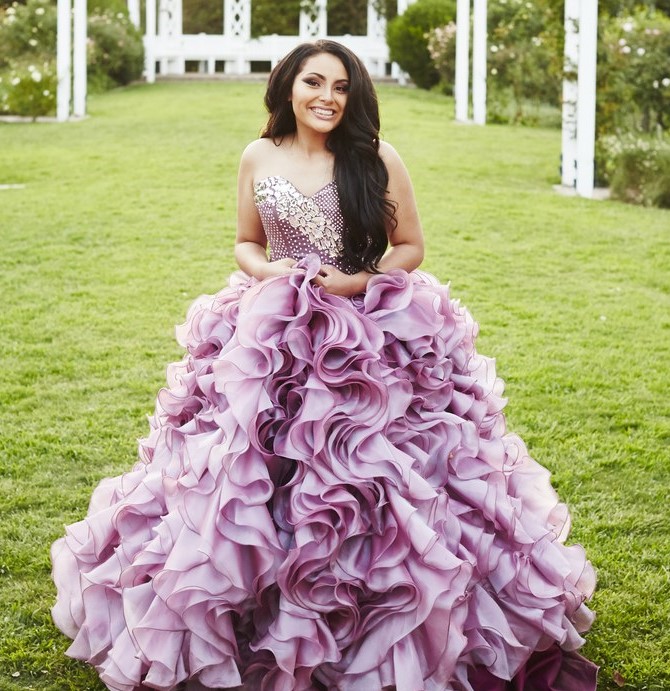
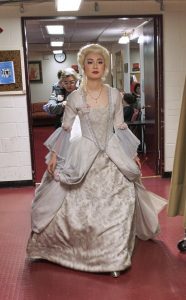
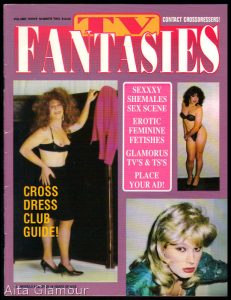

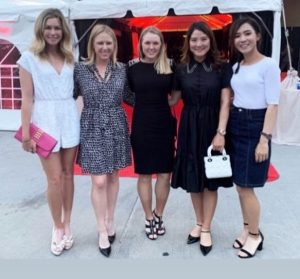









re: quinceaneras: as I wrote a couple of weeks ago–the 17 minute You Tube video-“bernardo-a day as a girl” demonstrates a boy going through a quinceanera – wow!
Emily, I didn’t remember that when I saw the article about Quinceaneras but it is a neat coincidence happening so close together. Thanks.